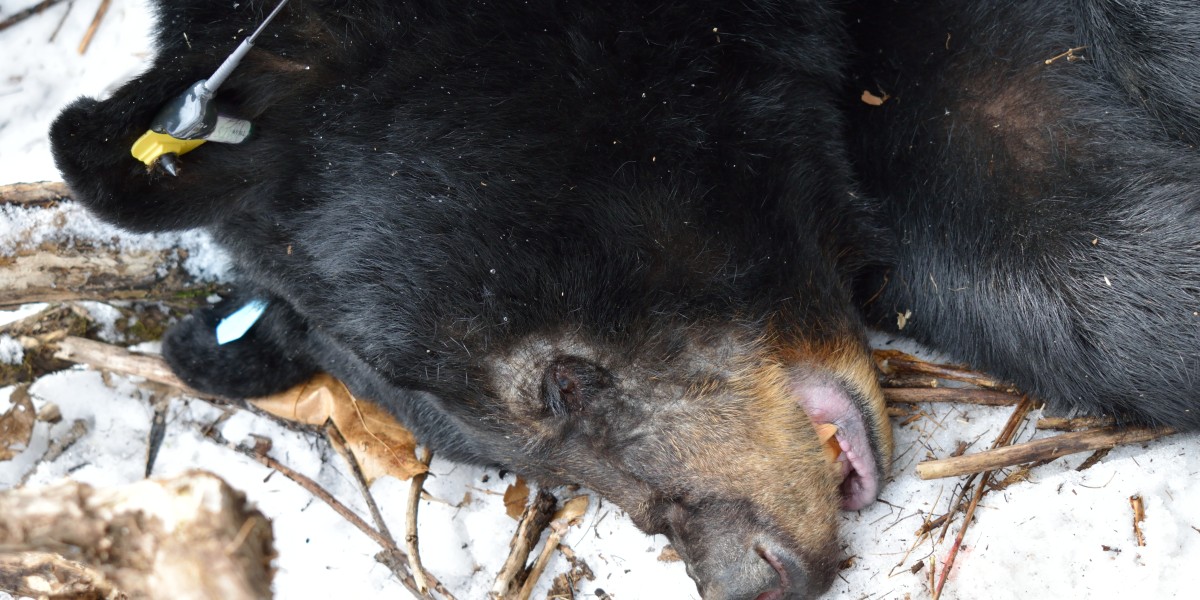This may sound like the start of a cheesy joke, but in reality – a wild black bear that is sick is NOT going to stroll into the nearby vet clinic, describe its symptoms, and ask for treatment. Bears must rely on disease surveillance performed by places like the CWHL, wildlife biologists and researchers, and nature lovers in the field to spot abnormalities in their physical health.
In the Northeast, there has been a notable increase in cases of a contagious skin disease, Sarcoptic mange, caused by the mite Sarcoptes scabiei. Some of the typical signs of severe infection in black bears are an animal in poor body condition, showing different degrees of hair loss and thickened, crusty skin. This often leads to secondary infections and can result in the animal’s death. CWHL has been studying this increase in the NE.
Adult female black bear with 4 cubs, photo taken during DEC bear den survey 2018. Photo by Laurie Dirkx
NY black bears recently came out of hibernation, where they keep a steady body temperature and sleep through the cold months of winter - typically between 4-6 months. Bears are not in a deep sleep and can react if they are disturbed. During this time bears don't eat, drink, or defecate and females typically give birth in late January or early February to a couple of tiny cubs that weigh under one pound. When they emerge in April or May, the cubs will be closer to 10 pounds and ready to explore the world outside the den, sticking with their mom for the next year.
If you spot a black bear in poor condition, do not approach but contact your local DEC office or contact the CWHL.
For more information on Black Bears in NY, visit NYSDEC's Watchable Wildlife







